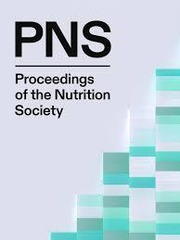No CrossRef data available.
Article contents
Co-designing a nutritional navigation guide for people with psoriasis: a user-centred design approach
Published online by Cambridge University Press: 16 December 2024
Abstract
In the absence of specific dietary guidelines and perceived inadequate dietary support from healthcare professionals (HCPs), people living with psoriasis (PLwP) often make restrictive or misinformed dietary changes(1) Following self-prescribed dietary modifications without the guidance of HCPs could negatively impact health and well-being (2). There is high demand for dietary advice among both HCPs involved in psoriasis care and PLwP(3). Research suggests that online content about psoriasis treatment is frequently inaccurate and typically not produced by HCPs(4). Therefore, PLwP need easily accessible support to help them navigate the nutritional information they may encounter, to enable them to make evidence-based informed decisions. This study aimed to develop a user-friendly and evidence-based guide to help PLwP in the UK navigate nutritional information.
A 4-phase User-Centered Design (UCD) approach was employed, utilising the UCD-11(5) framework, to co-design a guide that provides evidence-based information for nutritional navigation support for PLwP. Phase 1 involved the establishment of an expert panel which included experts in dermatology, nutrition and individuals with lived experience of psoriasis. The expert panel defined the scope and focus of the guide and from this the initial version of the guide was developed. The subsequent phases involved iterative design and content refinement, incorporating feedback from potential users through think-aloud methodology. Subsequently, the expert panel reviewed and provided input to complete the formation of the final guide.
The UCD-11 framework effectively engaged prospective users in the design and development of the guide and ensured a user-centered focus. The expert panel provided insights that enhanced the accuracy and relevance of the guide. Iterative design phases incorporated continuous user feedback, improving the quality, usability and visual design of the guide. The think-aloud methodology provided real-time insights into the guide’s clarity and functionality. Participants found the format clear and wording easy to read but made suggestions to improve usefulness. This included: “It would be useful to have more information on what dairy alternatives are and further sign-posting” and “explain what nightshades actually are”. Furthermore, participants highlighted other dietary recommendations they commonly see, and the need for clearer information on these. This feedback facilitated further refinements based on user insights.
Developing evidence-based dietary support materials using a co-design approach and UCD framework, resulted in a tailored guide that met the needs of service users. This approach facilitated the creation of user-friendly, evidence-based advice with input from experts and key stakeholders in psoriasis care. Future research should focus on exploring the value of the guide to healthcare professionals involved in psoriasis care. Additionally, monitoring effectiveness and use of the guide, by PLwP and HCPs, will help improve implementation, identify barriers to effective use and inform any necessary updates to the guide.
Information
- Type
- Abstract
- Information
- Proceedings of the Nutrition Society , Volume 83 , Issue OCE4: Nutrition Society Congress 2024, 2–5 July 2024 , November 2024 , E413
- Copyright
- © The Author(s), 2024. Published by Cambridge University Press on behalf of The Nutrition Society


